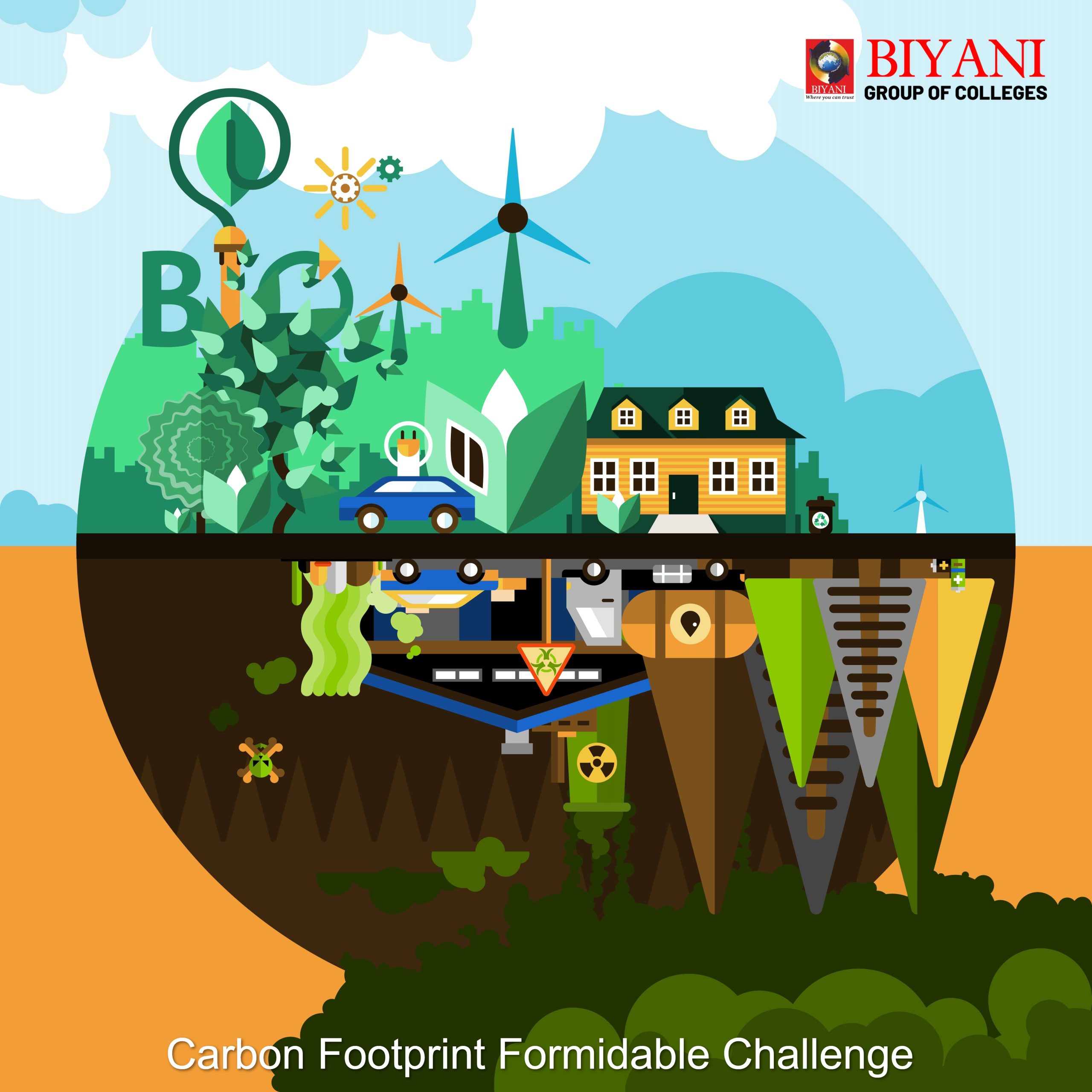Sustainability is the process where future generations can be preserved by fulfilling and keeping present generations’ needs in mind. In this era of globalization, where each country seeks prosperity for the sake of its citizens, the existence of a healthy planet for future generations has become a major challenge due to ecological imbalance.
In real time, each country is moving fast toward technological growth and trying to achieve trillion-economy targets. Substantial energy demand, industrial growth, deforestation, burning of fuels, forest fires, and urbanization are increasing the release of carbon dioxide beyond limits in the environment, raising global temperatures and causing global warming. Sustainability can be maintained by reducing CO₂ emissions, but achieving net-zero emissions remains a significant global challenge.
Carbon footprint is a tool used to measure the amount (per metric ton) of greenhouse gases — especially methane and CO₂ — released by anthropogenic (human) activity in each country. Carbon emission is directly related to each human, industry, organization, or country’s activity. The higher the emission of greenhouse gases, the greater the disturbance in the climate — and the lower the sustainability.
International Protocols and Agreements
Various international protocols and agreements have been formed and implemented under the United Nations Framework Convention on Climate Change (UNFCCC):
- Kyoto Protocol (1997): A legally binding treaty for developed countries to reduce greenhouse gas emissions. It includes mechanisms like International Emissions Trading, Clean Development Mechanism (CDM), and Joint Implementation.
- Paris Agreement (2015): A more inclusive and flexible global agreement featuring Nationally Determined Contributions (NDCs)—voluntary, country-specific emission reduction plans—and a robust Enhanced Transparency Framework for monitoring progress.
- Montreal Protocol: Focuses on controlling ozone-depleting substances. The Kigali Amendment significantly contributed to mitigating climate change.
Carbon footprint is an index that directly impacts sustainability. Several factors link carbon footprint with sustainability:

Factors Linking Carbon Footprint and Sustainability
- Energy Needs: Traditional energy sources like fossil fuels, coal, and wood are responsible for carbon emissions. Transitioning to renewable energy sources such as solar, wind, tidal, and hydropower can significantly reduce the carbon footprint.
- Transportation: Carbon emissions from transportation can be minimized by using public transport, carpooling, and adopting electric vehicles.
- Carbon Sequestration: Practices like agroforestry, reforestation, and reducing meat consumption can help sequester carbon and enhance sustainability.
- Service Selection: Opting for services that produce less waste and promote the circular economy can lead to more sustainable outcomes.
- Responsible Consumption: Using less, buying less, and choosing low-carbon, seasonal products can reduce emissions and environmental impact.
Read also: Role of Technology in Sustainable living
Ways to Achieve Sustainability
- Developing eco-friendly technologies
- Encouraging green innovation
- Using renewable energy sources
- Measuring environmental impact regularly
- Lowering greenhouse gas emissions
- Changing lifestyle habits
- Following the 6R principle (Reduce, Reuse, Refuse, Recycle, Repair, Rethink)
- Setting standards for emission control
- Implementing and regulating carbon pricing mechanisms
- Supporting Sustainable Development Goals (SDGs)
- Searching for substitutes for carbon-based materials
- Using carbon accounting methods
In short, the concept of carbon neutrality is essential for maintaining desirable atmospheric conditions. By achieving a balanced carbon content, we can ensure the ultimate goal of sustainability.
This educational overview is inspired by initiatives taken by the best bsc college in jaipur, which continuously encourages students to engage in environmental awareness, sustainable development, and green innovation for a better tomorrow.
Blog by:
Ms.Kanupriya Sharma
Assistant Professor, Department of Science
Biyani Group of Colleges

